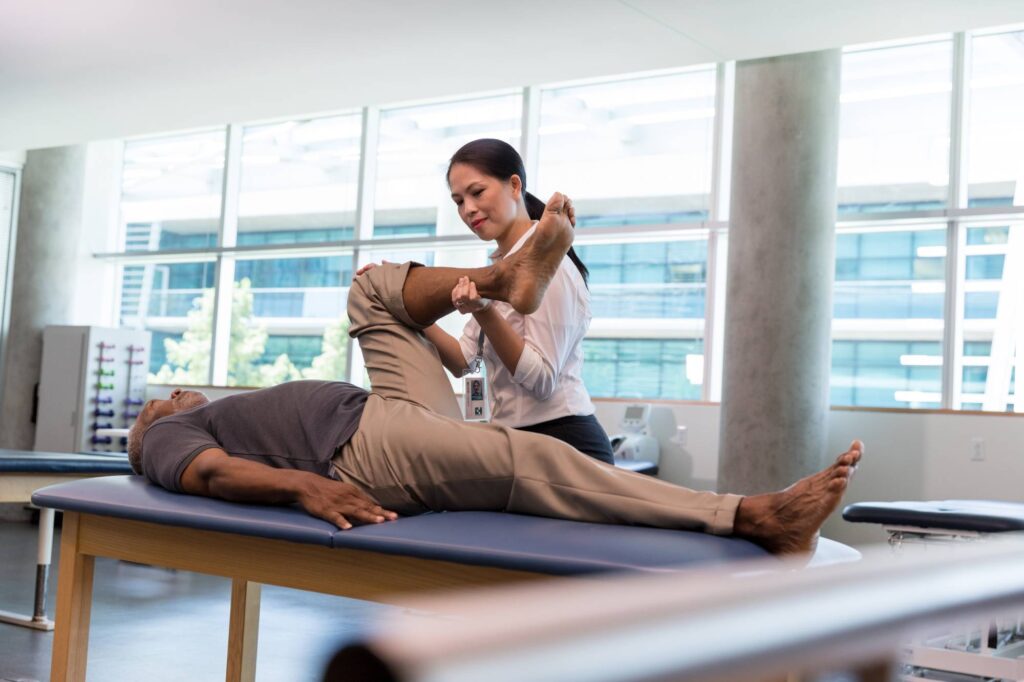
Overview
Joint mobilization is the careful manipulation of a joint to improve motion and normalize joint function. A physical therapist applies graded, targeted pressure to the joint and generates passive movement in a desired direction. These targeted manipulations are always guided by patient feedback to ensure minimal discomfort, with the physical therapist adjusting intensity for each individual situation. When indicated, joint mobilization can take the form of a quick, controlled movement to release a joint — accompanied by a possible popping sensation.
Joint mobilization is often performed on the neck, back, shoulder, knee, and ankle, such as for a frozen shoulder. An initial exam will help determine which movements are restricted and what level of pressure is suitable for the patient. As treatment continues over time, the physical therapist can progressively increase the range of motion and intensity of the mobilization.
Benefits
Limited mobility in a joint, which can be caused by a past injury or a musculoskeletal condition, is often associated with pain and stiffness. In addition, decreased movement of a particular joint may lead to overcompensation and stress on nearby joints and muscles. Joint mobilization is applied in such situations to:
- Improve joint mobility
- Reduce muscle spasms and tension
- Increase freedom of movement
- Decrease pain
Contraindications
Fused joints, bone fractures, joint instability due to dislocation, and severe degenerative joint disease are considered contraindications for joint mobilization.
